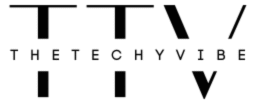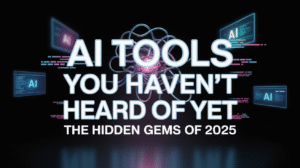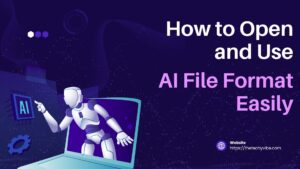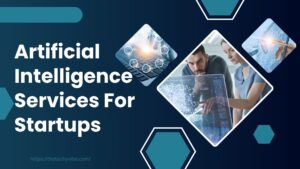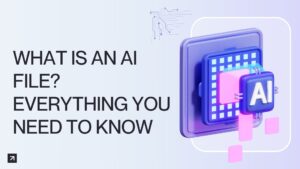The rise of AI is also affecting every field of the world, and it is now starting to play a significant role in how we learn and teach. From grading systems to personalized learning apps, AI is commonly used. No doubt it offers many benefits but it is equally important to know the disadvantages of AI in education. This article will deeply discuss the potential downsides with facts that students and teachers should be aware of. Why AI should not be used in education to ensure quality learning.
The Rise of AI in Education
All educational institutions like schools, colleges and universities have started using AI. These include online writing tools and AI tutors. According to a 2023 report by HolonIQ, educational departments of the world could spend up to $25 billion on AI in education by 2025.
AI also brings new challenges with its expansion. Not all changes are beneficial, and some may even harm the core values and quality of education. Let’s explore the drawbacks one by one.
Why AI Should Not Be Used in Education (At Least Not Always)
AI may look like a great helper in the classroom, but it shouldn’t always be used because it has some big downsides. First, it can’t replace the human touch. Teachers build trust and notice when a student is struggling, and inspire them in ways AI can’t. AI lacks empathy, cultural understanding, and the ability to teach students emotionally.
It can make students lazy about thinking deeply because AI might give them quick answers instead of finding the answers by themselves.
Loss of Human Thinking in Teaching
One of the most important parts of education is the connection between students and teachers. Teachers offer encouragement and adjust their methods based on students’ dynamics. These things AI simply cannot do.
When AI replaces or reduces this human interaction, students may feel isolated. According to a 2022 study by UNESCO, students in AI classrooms reported feeling 20% less connected to their instructors compared to traditional settings. This emotional distance can lead to lower engagement in education.
Over-Reliance on Technology by Students
AI tools can assist students with tasks like grammar correction and summarizing educational content, but they can also make them overlay on AI. Students simply use AI and online resources instead of writing an essay by themselves. Over time, this reduces the ability to think critically and solve problems independently.
Depending too much on AI can be risky in future for students. If students finish school without learning the basic skills, because AI did everything for them. They might struggle later in college or at work.
Bias and Errors in AI Algorithms
AI can only provide the information from the data it is given. If that data has stereotypes or isn’t diverse, the AI might end up showing unfair or biased results. So, everytime using AI for assignments and quizzes, students should do research for accurate information.
For instance, a 2019 study by MIT found that some AI programs used in grading had higher error rates for non-native English speakers. This raises questions about fairness and accuracy. In education, where every mark counts, such things can seriously lead to bad results for students.
Privacy and Data Security Concerns
To work effectively, AI often needs access to personal data—such as student grades, attendance, behavior patterns, and even voice recordings. This is raising major concerns around data privacy.
The data of students can be breached and used for identity theft of sensitive information. In 2020, several U.S. schools faced data leaks from AI platforms used for remote learning. This highlights the risks of relying on AI systems that store personal data.
Teachers might also feel uneasy when AI tools watch or evaluate them, especially if it’s not clear how their data is being used.
Reduced Critical Thinking and Creativity
One of the cons of AI in education is its tendency for passive learning. Students might stop thinking if they continuously use AI for answers, suggestions and explanations. Creativity, which is one of the core goals of education, can suffer as students get used to instant solutions.
AI can suggest what to write, how to solve problems, or can generate full essays for students. While this saves time, it doesn’t teach the student how to write their own ideas and make essays from them. Over time, this may weaken the imagination and ideas making skill of young students.
Accessibility Gaps and Inequality
AI promises to make learning easier for everyone, but that’s not always how it works. Many AI tools need a strong internet, new devices, or paid plans—and not all students, especially in poorer areas, can afford these things.
According to the World Bank, over 50% of students globally lack internet access at home. This means that AI education tools may actually widen the digital divide, creating an unfair learning environment.
Also, AI usually doesn’t help students with special needs unless it’s made just for that. This means the students who need the most support might be left out.
Teacher Job Insecurity and Deskilling
Teachers fear that AI will replace their jobs by doing lesson planning, grading and attendance. This can make teachers feel undervalued or even obsolete.
Another problem is raising that teachers might stop building their own skills if they depend too much on AI. If the AI handles grading, feedback, and tracking students, the teacher’s own knowledge and experience could fade over time.
This change could also reduce the demand for qualified educators, especially in schools trying to cut costs.
Final Thoughts
AI in education is not all bad. It can help by saving time, working fast, and giving useful insights to teachers and students. But there is a need to use it wisely. The cons of AI in education like bias, privacy problems and less creativity can not be overlooked.
That’s why it is important for both teachers and students not to use AI too much. It should help teachers, not replace them. AI should be a helper for students, not make them dependent.
In the future, schools and decision-makers should try to keep a healthy balance—using the good parts of AI while still focusing on what really matters: human connection, creativity, and care in learning.
